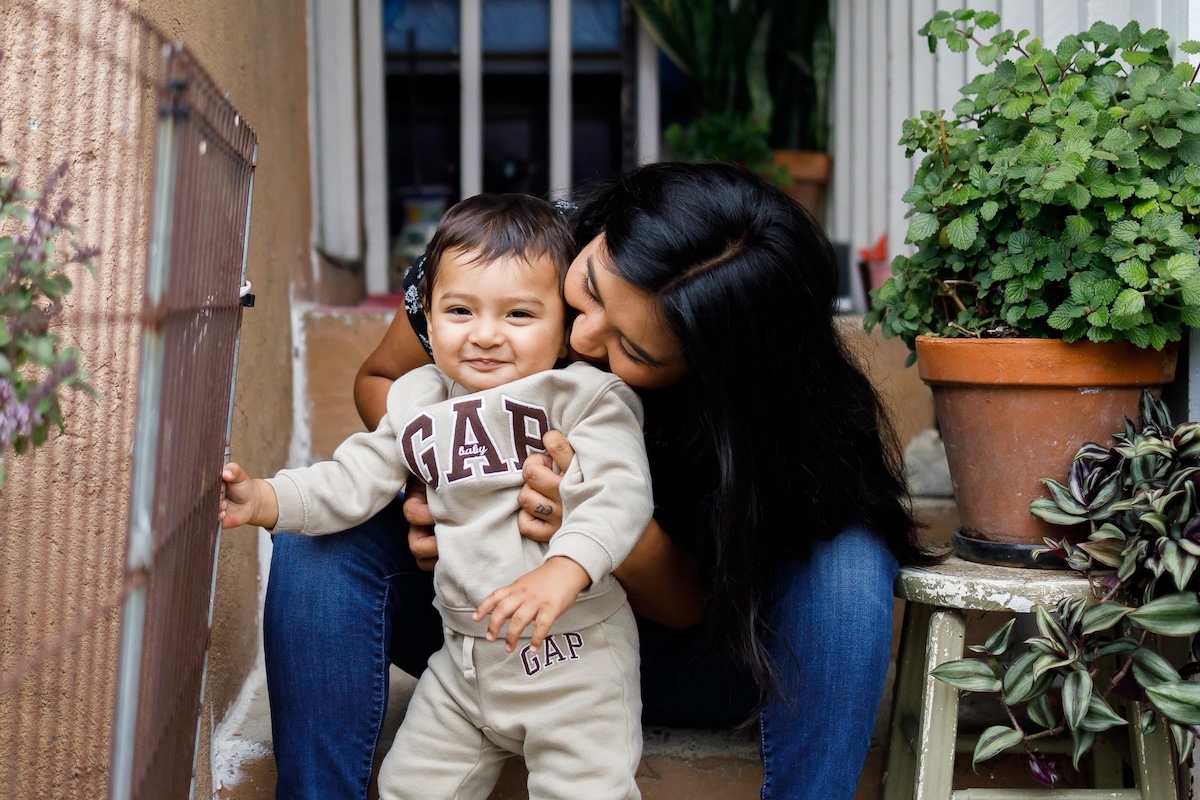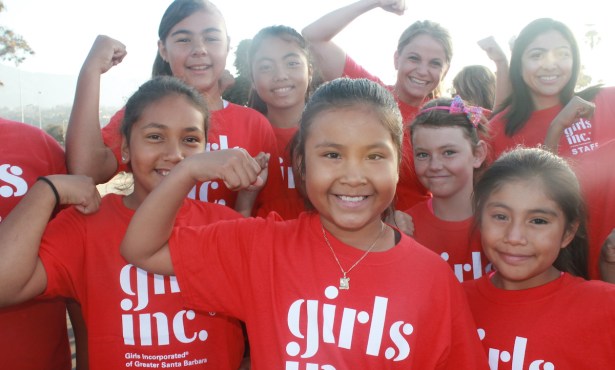How Affordable Is Childcare in Santa Barbara?
Local Parents Forgo Licensed Centers to Pay Thousands Out of Pocket

The Indy is the Santa Barbara Independent’s podcast, hosted by Molly McAnany. On this week’s episode, Zoë Schiffer, freelance reporter for the Santa Barbara Independent, shares more about this week’s cover story where she dissects accessibility to childcare in Santa Barbara.
Santa Barbara is a unique case. Pre-K programs are impacted, and there are few licensed childcare centers in the area. This is leading many parents to forgo waitlists and pay thousands of dollars out of pocket for childcare so that they can return to work. Schiffer shares her own experience as a new mother and debriefs the stories of five local families who have struggled through the financial and emotional burden of securing care for their children.
The following is a lightly edited transcript of this week’s episode, which you can listen to here or wherever you get your podcasts.
Hello, and welcome back to The Indy, the podcast from the newsroom of the Santa Barbara Independent. I’m your host, Molly McAnany, and this week I’m here with Zoë Schiffer, freelance reporter for the Santa Barbara Independent, to talk about her cover story this week, titled “The Kids Are Alright. Are the Parents?”, which dissects childcare in Santa Barbara. Thanks for coming on the show this week, Zoë. Thanks so much for having me.
So Zoë, you’re a parent yourself. And I want to start off with this because your story is so integral to the piece that you wrote. You’re a new mom, but it seems like your expectation of motherhood wasn’t what you thought it would be. Can you share your mindset when you decided to have a family and maybe what people in your shoes are also experiencing? Yeah, I mean, I said frequently when I was pregnant that I was ready to be a dad, but not a mom. And it was kind of tongue-in-cheek. But I think what I meant by that was I wanted to focus on my career and come home at the end of the day, and kind of get to be a parent, but perhaps not the primary parent. And I really wanted to be able to prioritize work. And classically, after she was born, I felt really differently. And I still care about my career a lot and have weeks like this week, where I’m working on a big story. And that’s kind of the most important thing, but at the same time, I am very much the mom, obviously. And I want to be, I want to be, you know, a primary parent and have my child be kind of the center of my life and my husband’s life as well.
And when you were talking with people for this article, how did you approach this topic of value with people who pay for childcare, who choose to work from home, et cetera, et cetera? Has the issue of child rearing and working simultaneously for many parents, and especially moms, as you said, become the kind of like being in between a rock and a hard place? Yeah, I think to me, like there really is no right way to do it. And I also think my perception of what counts as work has really changed since being a mom. There’s this idea that being a stay-at-home mom somehow isn’t work and having taken maternity leave and done full-time care for three and a half months of a baby, and then going back to a job that requires me to be on the computer, I can 100 percent say that being a full-time mom is much, much more difficult and requires much, much more of my kind of presence and creativity. And so I think I really wanted to talk to families and just understand what were the options that were available to them, financially, geographically. And then what was important? Was it most important for them to figure out something they could afford, or where they had maximum time with their kid, or that was close to their house? Or where they knew the person who was watching them and kind of just look at the landscape of care.
Now, why is Santa Barbara a unique case? I know you talked to five different families. What did you notice specifically about the families you interviewed, with some coming in almost entirely different situations? You know, I think first and foremost, unsurprisingly, it’s one of the most expensive places to live in the country. And I think there’s a dual dynamic that’s beyond kind of the price of housing, which is that the jobs available to people here are somewhat limited. And so I think when you contrast that to where I lived, previously, which was Oakland, and San Francisco, housing is really expensive but a lot of people work these very high-paying tech jobs. And so there’s kind of this dynamic where people are paying for very expensive care, but they’re actually able to afford it. I think here there’s this feeling of a lot of people, people who make a fair amount of money and then of course people who do not, and we all feel like we’re treading water.
And was there any sense of like, this is the way that it’s just been, or did people kind of have a different perspective as well like you coming from a different place and being like, this is not how it is all over the state? I guess why Santa Barbara, in a way? Why is this a crisis right now, especially also, if you want to tie in during the pandemic, when everyone had to work from home? There’s a few things. I mean, I think with my generation, with millennials, in particular, our expectation of two dynamics has shifted pretty radically from, say, our parents’ generation. And I think one of those is quality of life, like lifestyle, and what we think we should and could be able to afford, is kind of wildly outpaced by inflation and the cost of housing and buying a home. So I think a lot of us look at people on social media, watch TV, and think like, oh, we should be able to afford that lifestyle, given what we make. And the reality is that we just can’t. Buying a home is cost-prohibitive for a lot of people. Then the other dynamic that I think is somewhat new, is just many of us were in very equal partnerships prior to having a child where we did the same amount of housework as our partner, we both felt like there was no expectation that we would take on extra tasks in that regard. And no matter how equal you try and make it, I think when you have kids, the kind of burden does fall a lot on women and the mother and the impact on our careers is a lot greater, because typically, we do have to take more time off. And I think that that makes it unique in terms of when the story is coming. Now, I think the where is really about how expensive it is to live here.
Yeah, and when we discussed a little bit before this interview, you know that phrase alone of taking time off when it is work; it is a 24/7 job, arguably. The framing of it in the U.S., I mean, in terms of equality, like you said, who takes care of the children that changes when the babies are born, and the baby impacts the mother’s life in a different kind of way. And when you were speaking with new mothers, what did they say about their quality of life and expectations that were placed upon them if they did decide to go back to work? Yeah, I think a lot of people I spoke to, people who ended up being in the article and people who didn’t, said a similar thing, which is that life couldn’t go back to how it was before they had a baby. So they took the leave that they had, which I think in California, the minimum is six weeks, they returned to work, and they were crying at their desks. They felt like they didn’t want to be there; it didn’t make sense to hand their baby off to someone else and be working a full-time desk job. And on a positive note, some of them were able to figure out these more flexible schedules. And I think Rachel was one of these people who’s in the article who said, you know, “I went back to work; it didn’t feel like it was the right thing. And so I took on a more flexible job and just decided that, to me, the priority was going to be maximum time at the beach with my kids; it wasn’t going to be my career.” And you know, I think she’s so successful and has had a flourishing kind of creative career. But that was just the reality. And then there were people like Pilar, who doesn’t have that option available to her. She’s a single mom; she’s paying for a lot of stuff herself. And she has a job working for the county where she has to, I think, be there about 7:30 or 8 a.m. every day. And so her reality is that she drops off her kid and gets home from work and has a couple hours while he’s still awake. And then the next day does the same thing. And that’s just what has to happen for right now.
So I know in your article, you mentioned a bit also about pre-K and the issue in terms of like toddlers getting into these free public schooling situations. Why are pre-K classes so impacted? Why are people not able to get their kids into even a public center so that they can be looked after? And have people had to result in private schooling to keep their children on track? Yeah, I should have said this when you asked about why Santa Barbara in particular, because it is true that we have a real lack of licensed childcare centers. And I think this is important because one of the things that’s so important as a new parent is making sure that your kid is in a safe environment. I think any parent would of course say that, but part of that is finding a place that’s licensed where there’s the correct ratio of childcare providers and children, and you know they have a good track record of taking care of those kids. And in Santa Barbara, I think the latest survey said that there was over 1,000 people on waitlist; when you get off of the waitlist you’re paying well over $1,000 a month for childcare, and it becomes this question, I think, for a lot of people, particularly if they’re not in very high-paying jobs, like, is it even worth it for me to go back to work when I’m then paying more than half my salary to someone else to take care of my child?
And I’m curious, like specifically during the pandemic, did that situation where there is kind of a lack of licensed care centers, did people have to have more joint care with other families, did that cause a lot of issues in terms of kids getting each other sick? I mean, was that just added anxiety on top of everything? Yeah, for sure. I think the pandemic was kind of radicalizing for a lot of families, in that they had to completely shift how they were doing childcare. I think, you know, a lot of schools were doing the best they could, but it meant that they were giving kids iPads and asking them to be on the computer for like six hours a day, which just for a toddler is not a realistic expectation. And it’s horrible for the teacher, horrible for the family, and it’s definitely horrible for the kids. So what we saw during that time is that a lot of families that could afford it created these pods, where they hired a childcare provider or an educator independently of the school and they got together with a few other families, and they just set up an outside of the school learning system where their kid could be cared for, but also have a level of socialization. And I think now that that model is out there, you know, if something like the COVID-19 pandemic ever happened again, I think we’d see a lot more families flip to that more quickly, and just immediately pull their kids out of school.
So I guess looking forward, what would you want to change first? I guess, through your investigating, what would be a good solution? I know there’s always a financial issue. That’s a big part. And it could be funding from the state, funding from the county. Locally, do you think there are barriers to childcare centers getting approved and getting their licenses? I mean, what are some of the issues that are creating this problem? Yeah, I mean, I think the number-one way that you show parents that you care about their children, and you show women that you prioritize their health in this country is to extend maternity leaves, and to have childcare be provided for at least until the age of 5. I think the fact that there’s six weeks of maternity leave in California, that’s not enough time for anyone to recover. And a six-week-old baby is a really tiny baby. So for me, like just to get nitty-gritty about it, I would say mat leave should be a year minimum. Because it shouldn’t be the expectation that we go back and our brains are functioning like they were before, and we figured out childcare all within that first kind of critical newborn period. I think if it was the norm to take more time, and then when you did go back, it wasn’t this incredibly stressful situation of trying to scramble together finances and get off a waitlist and get into a school, but it was actually just paid for. That would help everything; it would help certainly the health of the mother and the health of the family, but it would also create better outcomes for kids.
In California, mothers are offered what’s called Pregnancy Disability leaves for up to four weeks before birth, and six weeks following or eight weeks if delivered by C-section. As a part of the California Family Rights Act, mothers who take pregnancy leave must be reinstated into their original job, or an equivalent position for equivalent pay and benefits. Up to 12 weeks during the first year, it can be taken off, but it’s not mandated by the state that mothers be paid. Instead, expectant mothers may be eligible for state disability insurance, which covers eight weeks post-delivery; paid family leave, which covers up to eight weeks of bonding time thereafter with your new baby; or mothers can use PTO, sick leave, or vacation days. According to a 2022 report from CNBC, California ranked in the bottom 10 on a list of the best and worst states for working mothers. And that is the priority at the end of the day, like, when you send your kids with a nanny or off somewhere, it is a hard decision. But there’s this expectation. Now to close out, I guess, what would you say is the overarching goal of the piece? What did you want to get out of it? What did you want readers to know? Did you want this to kind of spark a transition? Did you want this to be a part of an onslaught of other articles that of course have been written about like why mothers in America need to be treated better? Why are you so impassioned by this? I mean, of course, besides being a new mother yourself. To me, if there’s any good outcome, it’s really just that people feel less alone. And we have insight into how other families are doing it. Of course, if I could like create a movement, and suddenly California rolls out universal pre-K that starts like at birth and goes to 6 years old, like yes, that would be greater than my wildest dreams. But I think even just people feeling like, “Oh, this is hard for everyone, and there are a lot of different ways of doing it,” and none of them are right or wrong, would be powerful. Because I know, as a new parent myself, it’s incredibly isolating and making these decisions in a vacuum is nearly impossible. I also just want to say because you said, like, if I could, I would raise them on my own. I actually don’t feel that way. Like, I wouldn’t want to be a full-time mom, I don’t think. But I do want the option available. That’s what’s hard. It’s like, I am really grateful to get to go to my job and have that part of my identity, and being a journalist is I think like my calling and vocation. And at the same time, I didn’t have a choice, because Santa Barbara is so expensive. And I still don’t have the choice to do full-time fair because it’s cost-prohibitive. So right now, I’m working full-time, and we’re scrambling together the off hours. And that, to me, is a wild situation for two people, like my partner and I have good jobs. And I think what we saw in the article is that, to some degree, this is true for everyone in Santa Barbara.
Yeah, yeah, definitely. No, and in saying that, of course, it’s not like, “Oh, every mother wants to be a stay-at-home mom”; it’s the fact that there seems to be limited support for those who want to be a mom and work. These are the people that are raising the next generation of people who will go out into the world and do the same thing, just like every generation has done. Was there anything else that you’d like to add? I mean, even resources in Santa Barbara, that you heard of that could be helpful. Yeah, there is a program called CalWORKS, where you can get subsidized care if you qualify. I think it’s income-based qualification. There was a person we highlighted in the article, Pilar, who was previously paying, I think, $700 a week and now pays about $12, for full-time childcare. And it’s, I think, been a really positive for her. I think if there’s any other note, it’s just that I think we really show our values as a society and what we pay to the people, raising the next generation of children and the fact that child caring as a parent is almost completely unpaid. And I think we talk a lot about like how expensive these programs are, but at the same time, it’s like, the fact that we are as parents having to even make that decision of how much are we willing to pay for quality care for our kids is kind of a broken system in and of itself, because I think, ideally, you’d have the government saying, “This is so important, and so we’re gonna pay for it for you.” And instead, it kind of becomes this values question of like, well, you as a parent, what are you going to prioritize? What are you going to pay for your kid? You shouldn’t have to make that decision. We as a society should tell you, “We care about this. We care about you, as a mother, we care about your child and thus we’re going to prioritize it in the budget.”
Well, that’s a great way to end off, Zoë, thank you. Once again, I’m your host, Molly McAnany. Tune in next week for another episode.
Support the Santa Barbara Independent through a long-term or a single contribution.



